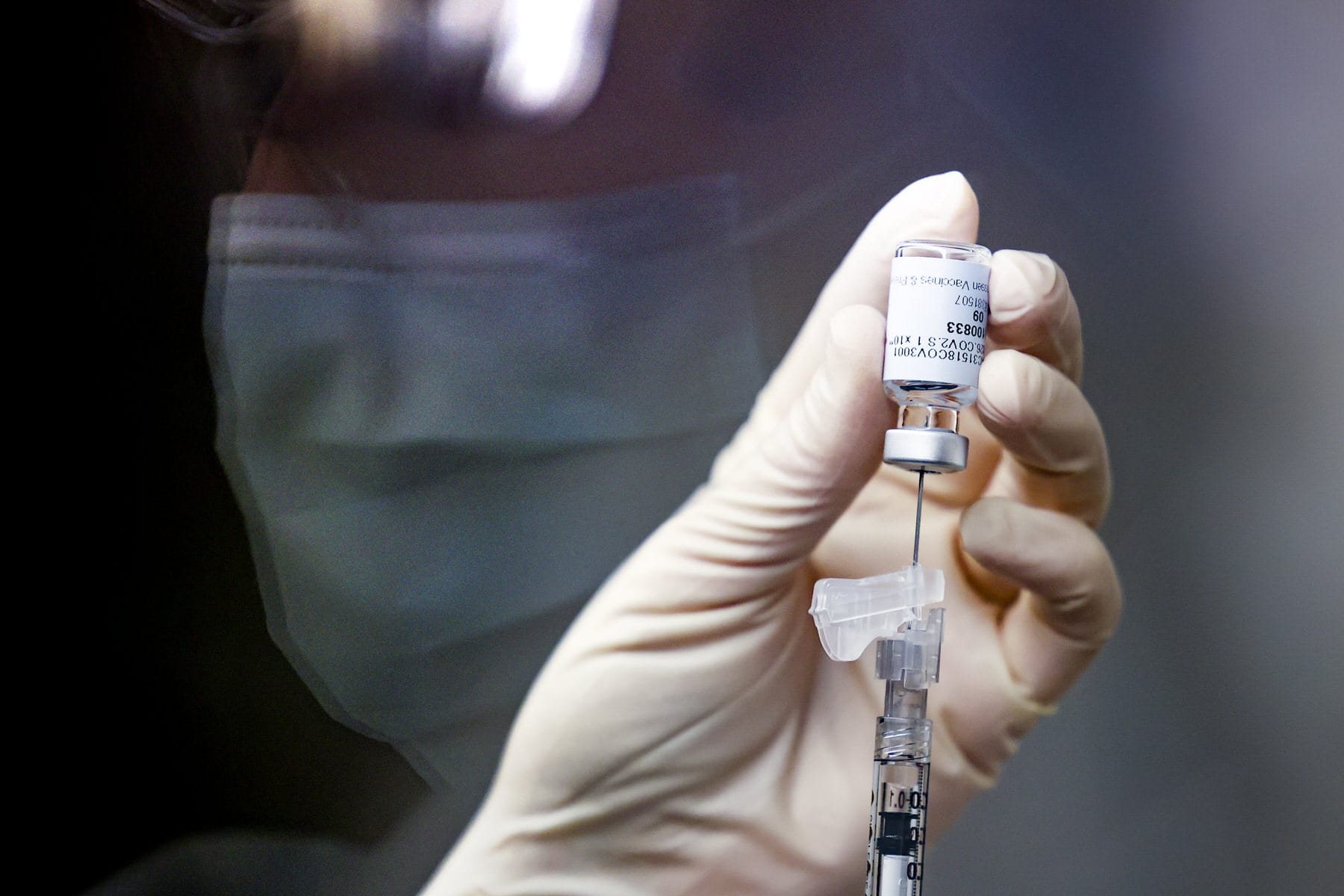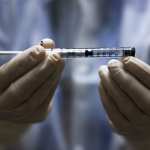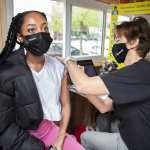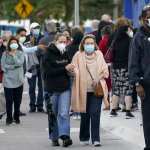Two COVID-19 vaccine candidates could help alleviate the challenges in vaccinating women — particularly frontline workers — that have emerged in the nation’s quest for herd immunity.
Data posted by Novavax and Johnson & Johnson suggests their COVID-19 vaccines could offer strong protection against the virus. But both candidates appeared far less effective against a new variant of the virus that has spread through South Africa and appeared in South Carolina Thursday. The emergence of the highly potent B.1351 variant has only furthered the need for speedy vaccinations.
Novavax is still some time away from bringing an immunization to the United States. The company’s data, posted Thursday, came from an early analysis of its large-scale clinical trial, which hasn’t concluded. Its efficacy dropped from 90 percent in the United Kingdom-based trial to 49 percent in South Africa, where it predominantly addressed B.1351. The vaccine requires two doses.
The Johnson & Johnson vaccine candidate, the company said, showed 85 percent efficacy against severe illness, and 66 percent efficacy against moderate to severe illness. Those results come after a completed clinical trial, and could have a much quicker impact.
“This has important potential and real implications, both domestically and globally,” said Anthony Fauci, the nation’s top infectious disease expert, who runs the National Institute of Allergy and Infectious Diseases, at a White House briefing.
Johnson & Johnson shared the information via press release, and has not yet posted the full data from its clinical trial, including information about side effects. But the company said it intends to apply for emergency use authorization — the same designation that has allowed the distribution of Moderna’s and Pfizer’s vaccines — as early as next week. If authorization is granted, that could bring new doses into distribution sometime in February. The company has said it expects to supply 100 million doses of the vaccine to the United States by the end of June, though a large amount likely won’t be available until April.
For that vaccine, protection against the virus varies based on the coronavirus variant. In Johnson & Johnson’s U.S.-based trial, the vaccine showed 72 percent efficacy against moderate to severe illness. In South Africa, where it predominantly encountered B.1351, efficacy dropped to 57 percent. But even in South Africa, the vaccine appears highly effective in preventing severe illness. No deaths were reported amongst trial participants who took the vaccine.
Unlike the Moderna and Pfizer vaccines, Johnson & Johnson’s product consists of only one injection, and can be stored in a regular refrigerator rather than hyper-cold freezer storage. Those differences could make it far easier to distribute the vaccine through places like local doctors’ offices, community pharmacies, schools, pop-up clinics and community health centers. It could also be easier to provide via massive distribution sites, such as sports stadiums.
Those are places that may not necessarily have deep-freezer capacity, but can be easier to access for someone facing transportation or child care barriers that make it hard to travel many miles for a vaccine. Those are issues that disproportionately affect women, and especially working women.
“The [lack of] cold-chain requirements will help access a lot. And it’s effective — 85 percent is good. This will get more people vaccinated,” said Rupali Limaye, an associate scientist at Johns Hopkins University.
The one-shot requirement could be critical in reaching women who aren’t regularly connected to the health care system, who are nervous about sharing personal paperwork with local health officials, or who don’t have paid time off to go get two separate vaccine doses.
One question health authorities are grappling with is if they should target a Johnson & Johnson vaccine — that is somewhat less effective, but requires only one dose — toward lower-income neighborhoods. There, they would reach people more likely to run the risk of coronavirus exposure, but also who may not be able to access a pharmacy with advanced freezer technology. And more people are likely to face economic barriers when it comes to getting two vaccine doses.
“Do you prioritize Johnson & Johnson to go to communities where there’s a high risk of contracting severe COVID, because you know more people have access?” Limaye said. “On the flip side, wouldn’t you want to send Pfizer and Moderna, but to be effective you need more doses? Is that feasible? It’s definitely complicated.”
Still, it’s not yet fully clear what role new Johnson & Johnson vaccines would play in the national coronavirus response. Combined with existing orders of Pfizer and Moderna vaccines, the 100 million doses from Johnson & Johnson could be enough to vaccinate the vast majority of the adult population.
But the Biden administration has also announced efforts to procure 200 million more vaccine doses from Pfizer and Moderna — enough to potentially vaccinate the adult population even without Johnson & Johnson. That purchase hasn’t yet been finalized, though, and it would still take until the end of summer to vaccinate everyone, the administration has said.
White House Press Secretary Jennifer Psaki declined to comment on how the introduction of Johnson & Johnson doses could affect its vaccination plan, saying that the administration did not want to speculate on something that wasn’t yet authorized for use.
“No matter what happens with other approvals, we will have the supply to vaccinate the entire nation,” said Andy Slavitt, a senior adviser to the White House COVID-19 Response, in a Friday briefing.






